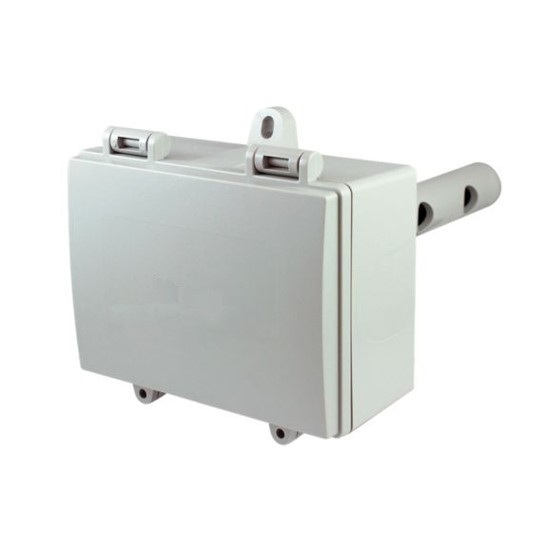Air Flow & Air Velocity Sensors
Airflow Sensors: These measure the total air volume moving through a duct, ensuring balanced airflow for consistent temperatures and optimal efficiency. They also help identify potential issues like clogged filters or failing fans.
Air Velocity Sensors: These measure air speed at specific points, verifying proper ventilation and optimizing fan speed for efficiency.

Air Flow Sensor:
- Maintaining System Balance: Measures the total volume of air flowing through a duct or air handler. This data is crucial for ensuring proper airflow balance throughout the HVAC system. Balanced airflow delivers consistent temperatures in different zones of a building, promoting occupant comfort and energy efficiency.
- Optimizing Performance: Helps identify areas with insufficient or excessive airflow, allowing adjustments to dampers, fans, and other system components for optimal performance.
- Demand-Based Control: Provides real-time data that can be used for demand-based control strategies. The system adjusts airflow based on actual cooling or heating needs in different zones, reducing energy consumption.
- Preventative Maintenance: Early detection of airflow deviations can indicate potential issues like clogged filters, failing fans, or duct leaks. This allows for proactive maintenance and prevents more serious problems from developing.
Air Velocity Sensor:
- Focused Measurement: Measures the speed (velocity) of air moving at a specific point within a duct or at a supply register.
- Verifying Airflow: Confirming that air is moving at the intended velocity in critical areas like supply registers.
- Ensuring Proper Ventilation: Verifying adequate air velocity for effective ventilation, particularly in areas with high occupant density or potential for pollutants.
- Improving System Efficiency: Optimizing fan speed based on actual air velocity measurements can improve system efficiency and reduce energy consumption.
Key Differences:
While both sensors deal with airflow, they provide distinct information:
- Airflow Sensor: Measures the total volume of air passing through a duct or air handler over time.
- Air Velocity Sensor: Measures the speed of air movement at a specific point.
Working Together:
Airflow sensors and air velocity sensors are often used together to provide a more comprehensive picture of system performance. Airflow sensors give a big-picture view of total air movement, while air velocity sensors provide targeted data on specific points within the system.
Benefits of Using Both:
- Enhanced System Optimization: By combining data from both sensors, you can achieve a more balanced and efficient HVAC system.
- Improved Comfort: Ensures consistent temperatures throughout the building by identifying and addressing airflow imbalances.
- Reduced Energy Costs: Optimizing airflow based on real-time data can lead to significant energy savings.
- Early Detection of Issues: Helps identify potential problems with filters, fans, or duct leaks before they escalate and cause more significant issues.
In conclusion, air flow sensors and air velocity sensors play vital roles in maintaining a healthy, efficient, and comfortable HVAC system. They achieve this by:
Monitoring and balancing airflow.
Optimizing system performance.
Enabling demand-based control.
Facilitating preventative maintenance.


